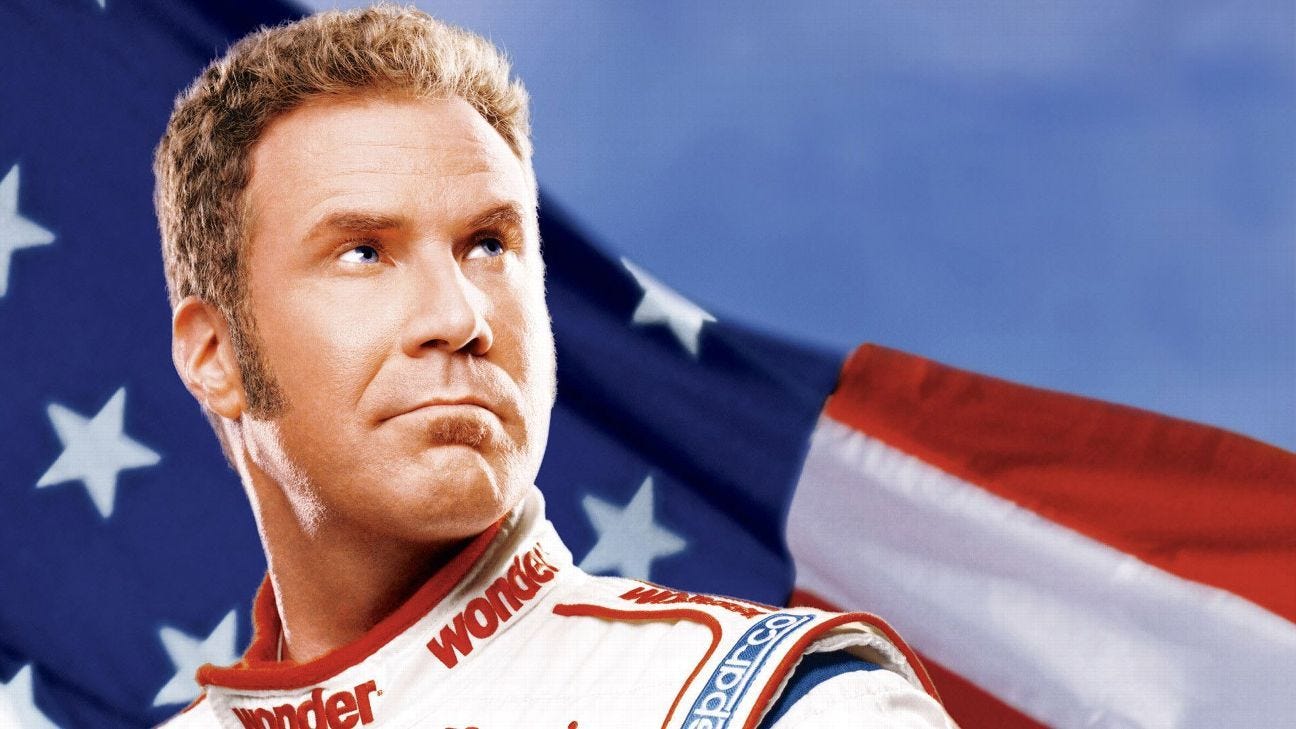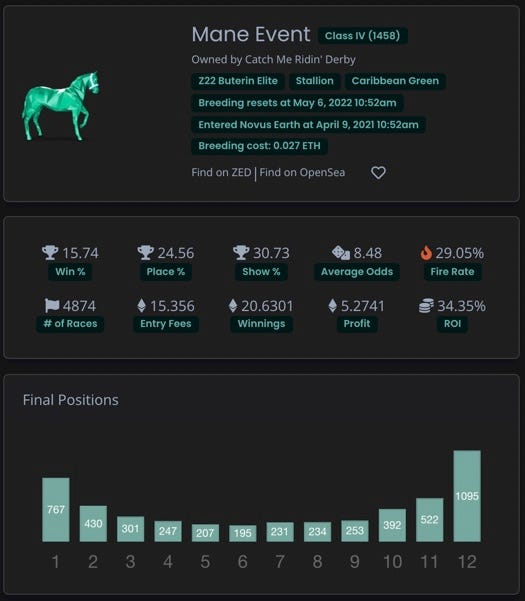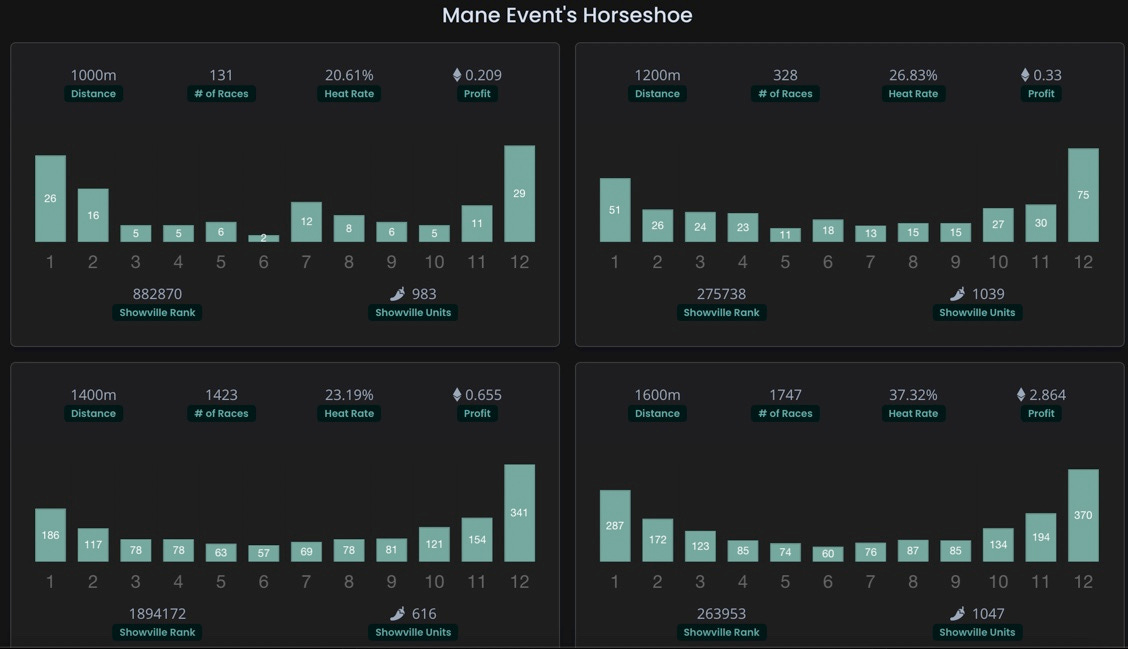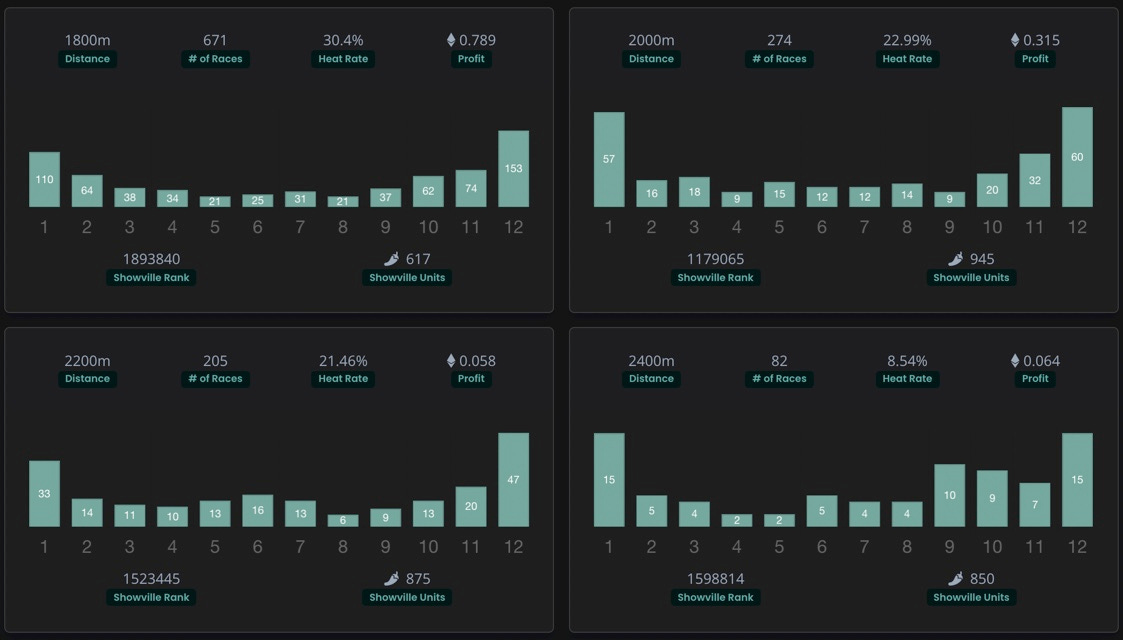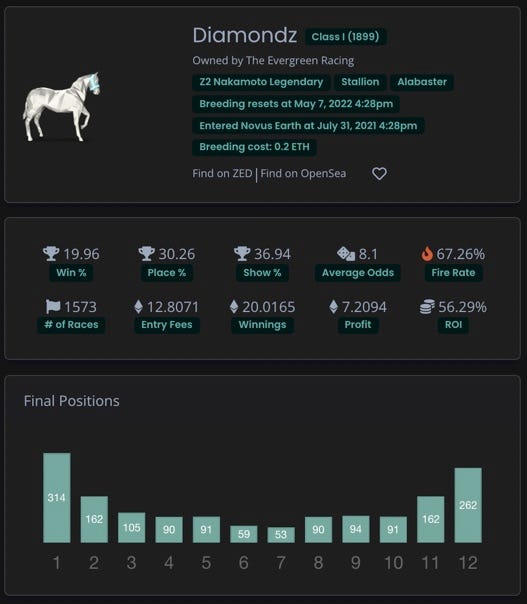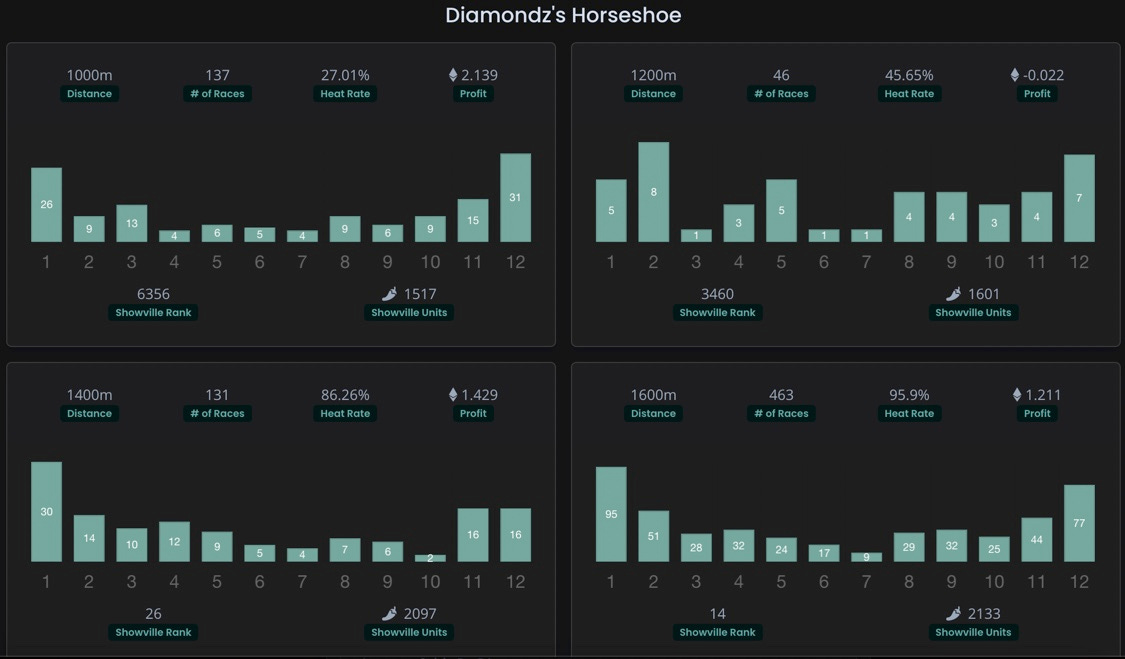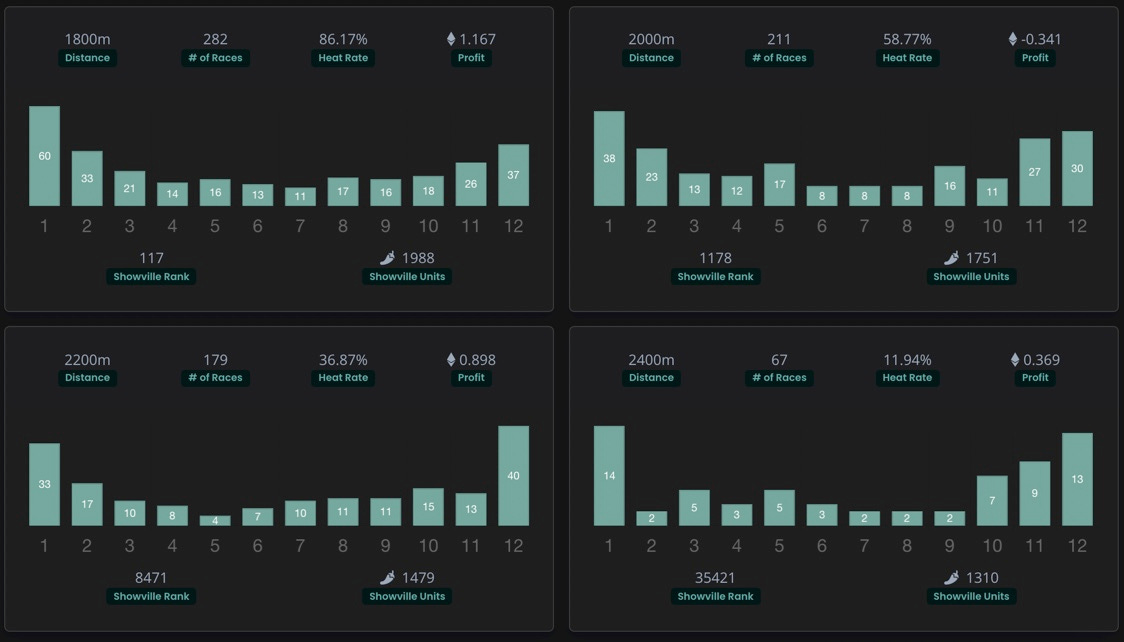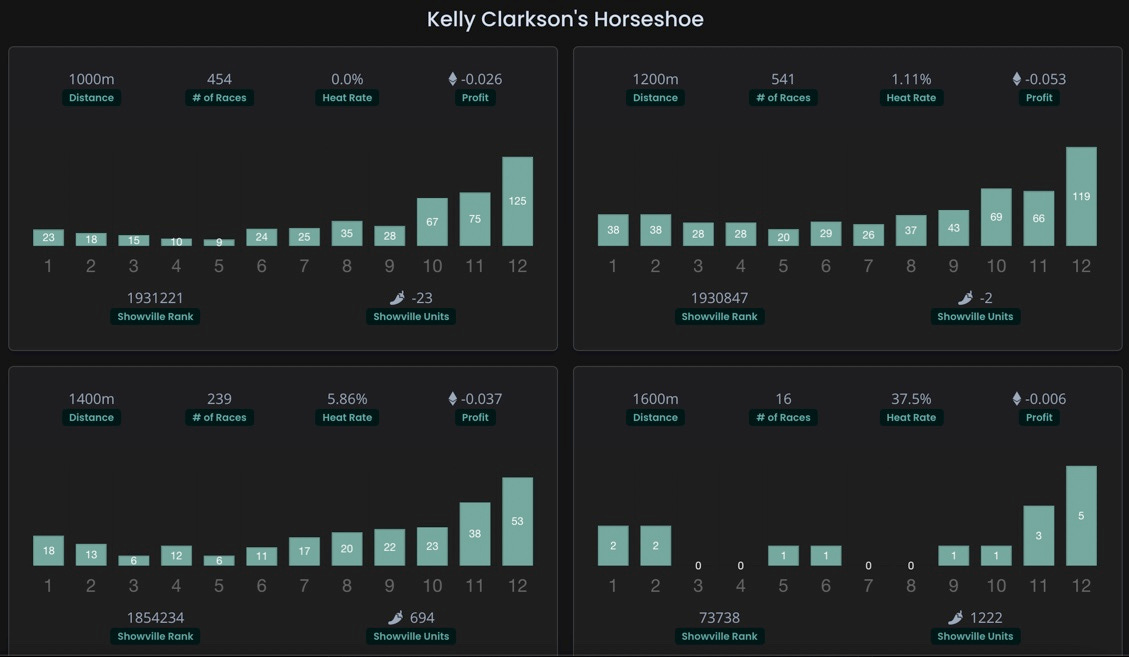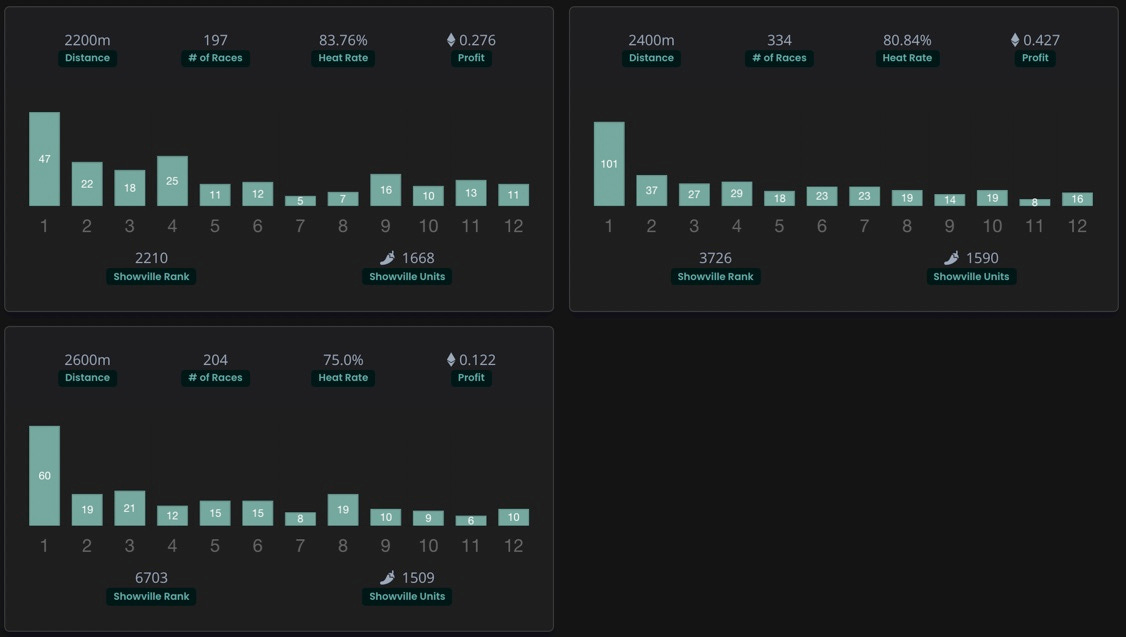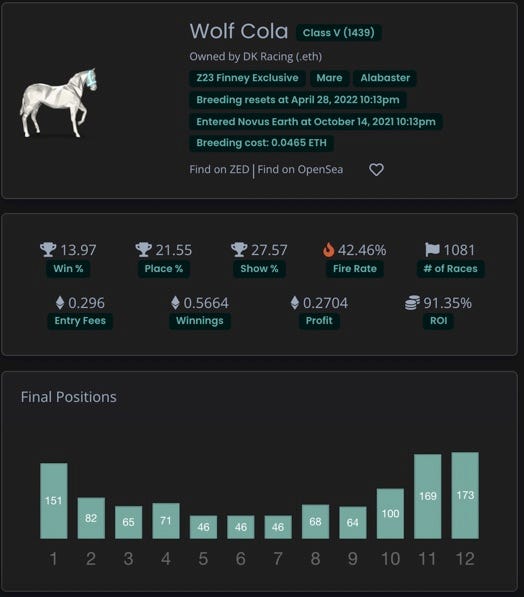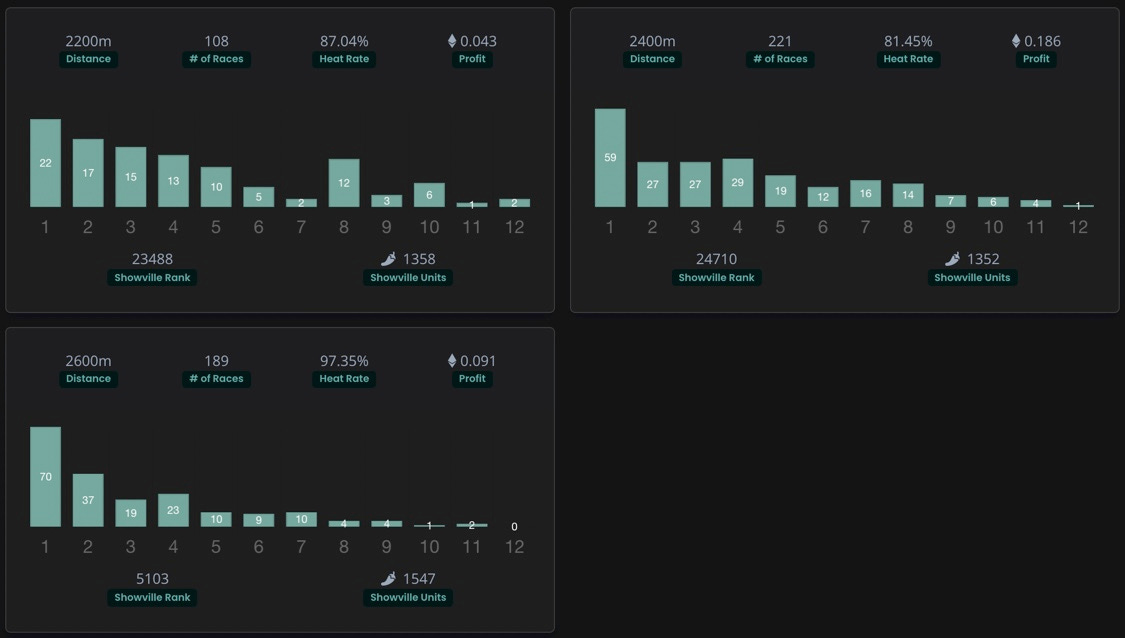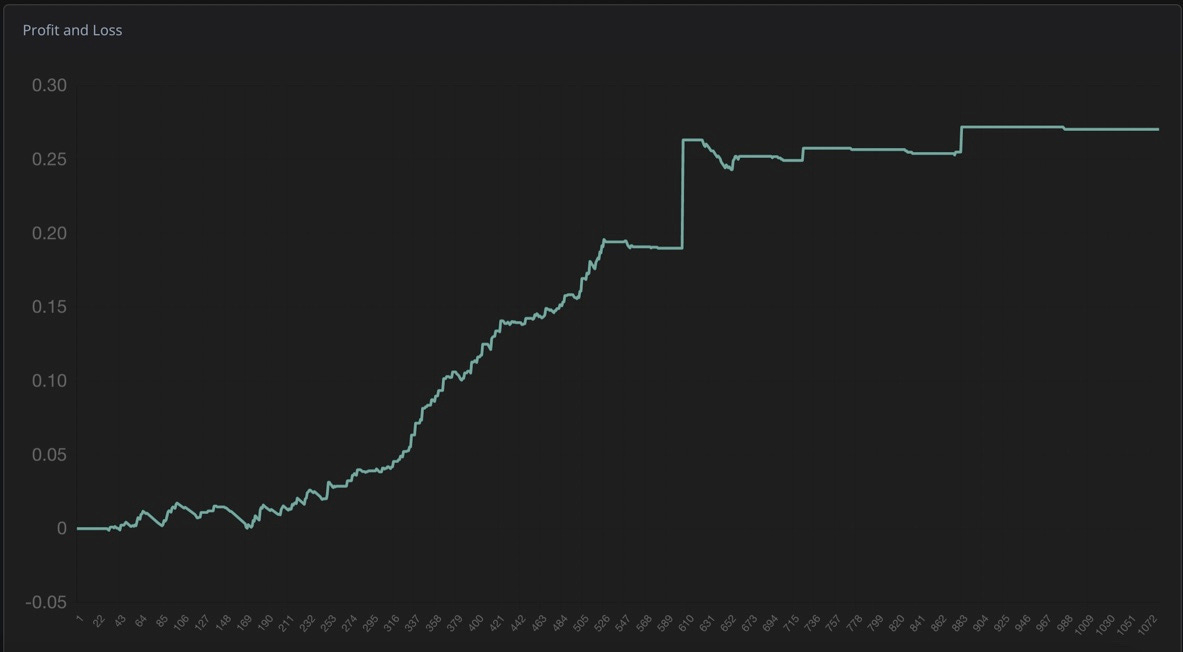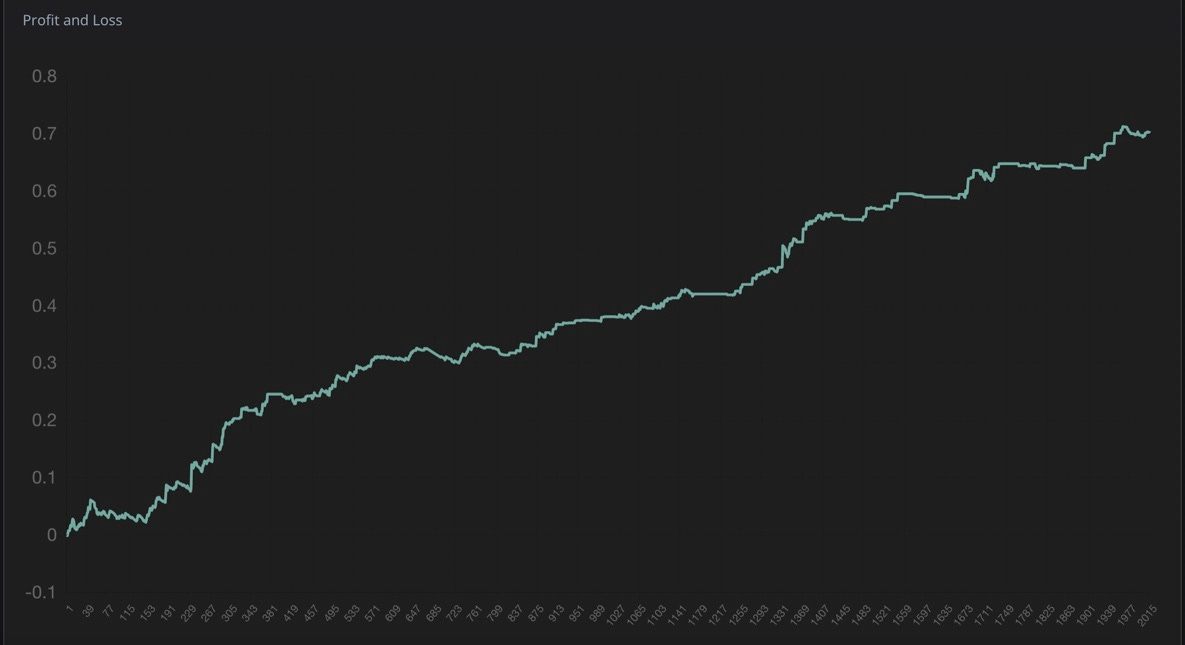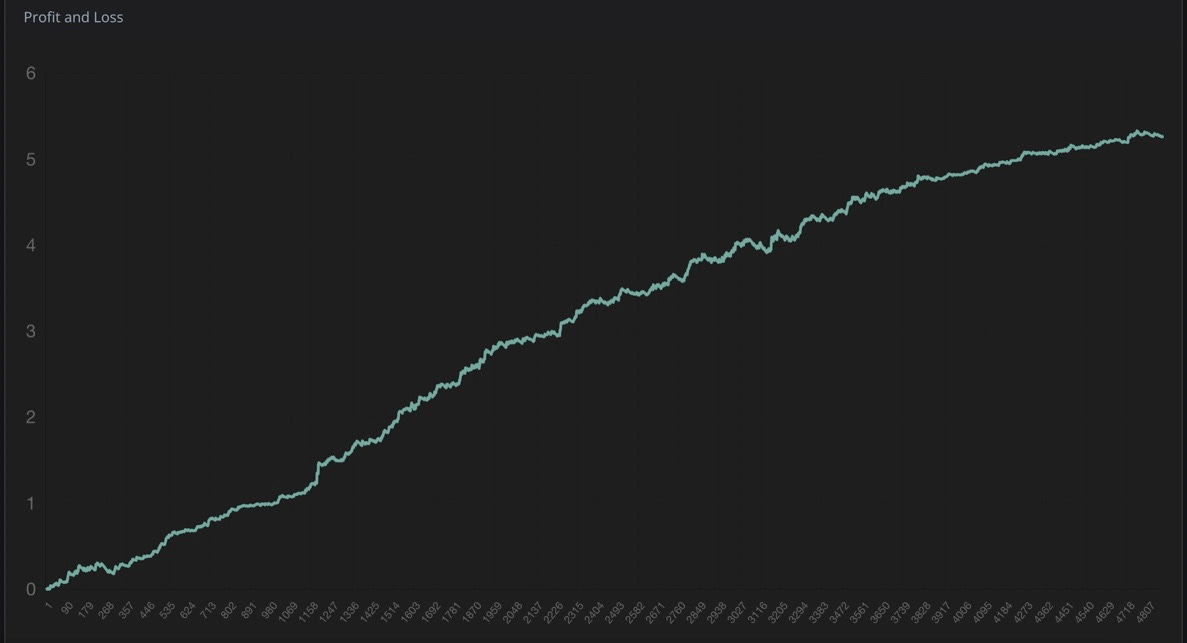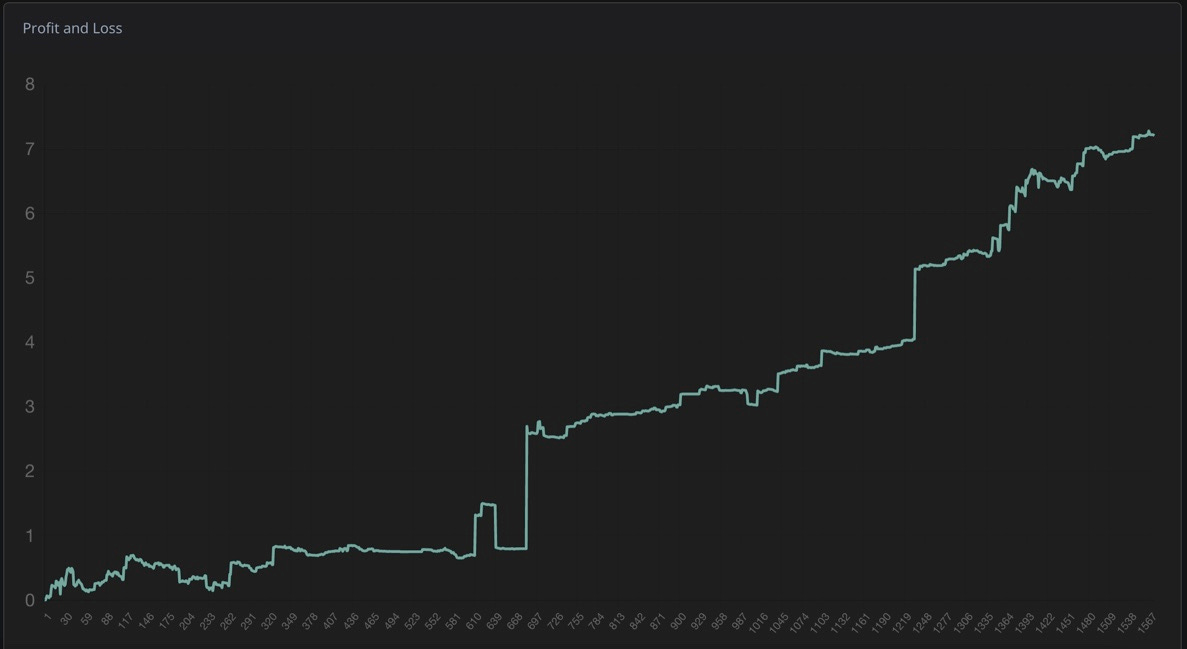“If you ain’t first, you’re last.” -Reese Bobby
Sure, Ricky Bobby’s dad was high when he dropped that wisdom in Talladega Nights, but perhaps the peyote was giving him a glimpse into the future.
Down here on Novus Earth, it has been the U shape horses, or the ones that finish first or last often, that have always reigned supreme.
There are a couple different models of U shape horses out there to be aware of and as the Zed Run ecosystem changes with increased competition, a shift toward tournament play, a breed update, conditional entry races/tournaments and hopefully lots more, maybe the domination of the U shape will come to an end. Maybe it already has come to an end….
A little over a week ago, we discussed Zed race characteristics. If you haven’t had a chance to read that or are newer to the game, check it out here! It might help give you a better understanding of some of the dynamics we’ll talk about below.
Before we gaze into the crystal ball of the future of U shapers, let’s look at what types of U shape horses have had success in the past and the current state of U shapes in the game today.
Why are U shape horses valuable?
Let’s quickly touch on why a U shape horse is important to be sure we are all on the same page.
You first need to understand the Zed class system and class points.
Under the Zed class system for racing, there are six classes. Each horse has a class rank that moves up and down as it wins or loses races. Here are the ranges of class points for each class:
Now in theory, the higher in class you go, the tougher the competition.
In the current system, points gained or lost vary based on competition in the field, but generally points are distributed this way:
This has been updated over the past several months. In old Zed, it was 4 pts for a win, down to 1 point for 4th (Pity Point), then -1 pt for 9th down to -4 for 12th.
And herein lies the value of the U shape. Win a race and you earn a little over 7x your entry fee. But win too much and you will run up in class. As your competition gets better, most horses eventually hit a wall where they can no longer be competitive.
However, if your horse can lose just as often as it wins, now you may be able to stay lower in class to continue racing against easier competition and keep its win rate high.
Some horses naturally win and lose due to their variance, while others can be controlled using distance preference. Let’s dig into that distinction.
The “Natural” U
Many OG horses in Zed are “Natural” Us. This is a horse than often comes in 1st or 12th due to variance. It sometimes hits a great roll that no other horse can beat and other times hits terrible rolls that every horse on Novus Earth would beat.
Mane Event is a classic example. Here are Mane Event’s results over 4800+ career races (good lord, Ridin’ Derby):
Mane Event basically does the same thing at any distance:
Diamondz is another example of a natural U horse:
Diamondz is also a low Z horse, so he has the base ability to rip off wins at a high rate even at the class 1 level. 1430 of Diamondz’ 1573 career races are class 1.
The “Manufactured” U
The manufactured U may look the same on the surface, but how they build the U shape distribution is very different. Arbitrage Racing may have been the ones to really popularize this tactic, but this is my article, so we’re going to breakdown my best manufactured U horse: Kelly Clarkson.
Here is Kelly’s overall distribution of results:
Kelly’s rare Sir Aquamarine coat makes her far more glamorous than Mane Event and Diamondz, but the results look similar, right? Well, here is Kelly’s horseshoe:
The way Kelly builds her U shape is through distance preference, not variance. Kelly does very well in marathons, but if I only ran her in marathons, she would quickly class up and have to face tougher and tougher competition.
However, she loses in sprints just as well as she wins in marathons, so I can run her in sprints to bring her down in class, then put her in marathons to win.
Here’s Wolf Cola, another one of my manufactured U marathoners:
Wolf Cola and Kelly Clarkson may have very similar models in their success, but one has been able to continue to be profitable, while one has had success that has stalled.
The State of the U
It’s no secret that the current race environment is very challenging. I could list out all the reasons why, or I could just tell you the story of Wolf Cola.
For a long time in Zed, free races were few and far between. There were no tournaments at that time, so paid racing was really the only place for action.
When Zed started to implement tournaments, they rolled out more frequent free races with no prize pool, as we see today, to allow stables to qualify for tournaments in free races.
However, free races also impact class points. Win a free race and you’re up 12 points. Lose and you’re down 4.
So what do sharp Zed players do? They hammer free races with their high distance preference, manufactured U horses to downclass for free.
Back in my day, we had to pay to drop our horses, but now all the kids are out here dropping for free.
For a while, a sharp player could really take advantage of this. Let’s look at Wolf Cola’s profit chart:
Notice how for her first 250 races of her career, there were consistent ups and downs in her profit. I would race her in a marathon and she would win, but then I would have to pay $2.50 per race to downclass her. She was slightly profitable under this model, but certainly not a monster.
Then came free downclassing. And for the next 250 races of her career, she was an absolute ETH printer. I would run her in a class 5 marathon, she would usually win and move into class 4 and I would immediately run her in free sprints until she was back to class 5. Rinse and repeat day after day. She made about .15-.2 ETH in easy profit over this time.
She capped off that run with a decent tournament pay day. But tournaments also brought out a deeper understanding across the community of the value of this up and down strategy.
Also, more staggeringly, it took lots of horses out of the paid racing ecosystem.
Imagine you have a horse with a bit of ability, but unable to race profitably. Would you continue racing that horse for $2.50 per race at a losing rate? Or would you just run it in free races and hopefully get lucky in a tournament with 0 downside risk?
The horses that Wolf Cola was feeding on day after day all of a sudden weren’t running $2.50 or $5 races because they could find action elsewhere.
Wolf Cola slowly bled ETH for a little bit while she raced against monsters even in class 5 and eventually just had to become a tournament horse as well, where she often qualifies easily in frees, but then struggles against the difficult competition in the tournament races.
There are lots of people out there with horses like Wolf Cola, so this isn’t a “Boo hoo for me” moment; we’ve all got to adapt or die!
Not all horses have suffered that same fate. Horses with more variance or base ability might still be able to have success even in the tougher fields of paid racing.
Kelly Clarkson has more variance than Wolf Cola and has been able to survive better against the more difficult fields:
Even though his profit slope isn’t quite as steep, Mane Event is still out there crushing:
Diamondz is continuing to make steady profit as well:
But the lower variance, low base ability, high (but not elite) distance preference horses like Wolf Cola have struggled in the paid environment.
U in the Future
So will I ever get Wolf Cola back? Maybe not in the current environment. As of right now, owners with these kinds of horses may be best served to just run them in tournaments to avoid the risk of steady losses.
But into the future, there should be a more diverse racing ecosystem coming to Zed. We are about to see our first conditional entry tournaments for Pacers and then Z268s. Zed has said they will be continuing to roll these out.
Ponyplug is about to roll out their Buterin Bonanza, which will be a custom tournament only for Buterins above Z21. Zombie Racing will be running a Maiden tournament that varies payouts based on bloodline and breed type.
What if Wolf Cola can run races exclusively against other Finney Exclusives in the future? Or only against other Z20+ horses, or horses in the Moon color group, or other failed supercoats?
Limiting competition in these ways could allow her to become profitable again.
We have also seen a recent update to the breeding algorithm. It’s still early, but many have noticed that distance preference seems to pass from parent to offspring more reliably than before.
Could distance preference be compounded into the future? Could I breed Wolf Cola with another marathoner and make an even better marathoner?
You could make a case that if distance preference can compound, this could make Wolf Cola more and more irrelevant with every cycle, as better horses are bred.
But I don’t think that makes her useless. Even if that were the case, she would have value as a breeder. And that point is still looking at Zed through the lens of the current race meta, which we know will be developed.
Could I eventually breed Wolf Cola with a variance horse or a higher base ability horse and make a better horse than Wolf? Could I then breed that horse strategically to make a horse that is better still?
I have no idea. But maybe…
What about the variance horses like Mane Event or Diamondz or, to a lesser extent, Kelly? If we accept the hypothesis that distance preference will continue to grow over time under the new breeding algo, eventually any horse in the current race environment would be worse than the new racers being bred.
But most likely, these high variance horses would be able to remain successful the longest. These horses can get great rolls that could even beat the new monsters coming out. But eventually if new horses got too strong, even the variance horses would be passed.
Should base ability and/or distance preference get stronger and stronger over time, there could become a shift where variance is no longer as valuable as “stability”, or consistent results race after race. If your horse has 2x the base ability of every other horse in its race, you don’t need variance. You’d want every face of the die to be a high number that can win on any roll.
More than ever before, Zed has shifted to be about strategic breeding and staying on top of the ever-changing race environment.
If you find a spot where your horse has success, exploit that for all it’s worth! But understand that your successful horse may not be successful forever. Stay diligent, be willing to sell and buy and change plans on a dime.
And no matter what, have fun with it! Zed is a big, changing puzzle and we’re all in it together!
-DK



